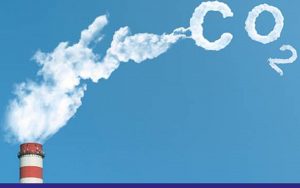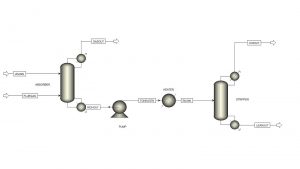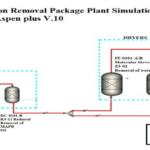Introduction
Carbon dioxide (CO2) emissions have become a pressing global issue, with anthropogenic activities significantly contributing to atmospheric CO2 concentrations. Power plants, deforestation, and fossil fuel combustion are major sources of CO2 emissions, leading to climate change, global warming, and greenhouse gas effects. Consequently, there has been a surge in research and development focused on capturing and sequestering CO2 from various sources.
While numerous techniques exist for capturing CO2 from industrial flue gases, these methods are insufficient to mitigate the rising atmospheric CO2 levels. To address this challenge, direct air capture (DAC) technologies have emerged as a promising solution. DAC involves capturing CO2 directly from ambient air.
This project investigates the feasibility of DAC using process simulation software. By systematically varying operational parameters, the study aims to optimize the process for maximizing CO2 capture efficiency while minimizing energy consumption.

Carbon Dioxide Capture: A Growing Necessity
Carbon dioxide capture has gained significant importance in recent years. As is well-known, vast quantities of CO2 are emitted annually from various sources such as power plants, forest fires, and fossil fuel combustion. For instance, flue gases from power plants alone contribute 12% to these emissions. The influx of this pollutant is causing climate change, global warming, greenhouse gas production, and detrimental effects like glacial melting. These issues have heightened the focus on methods to capture and sequester this pollutant from the atmosphere.
Advantages of Direct Air Capture (DAC)
Direct air capture offers several advantages, including the ability to remove CO2 emissions from all mobile and non-point sources, reducing the need for CO2 transportation, and compensating for CO2 leakage from underground storage sites. Moreover, DAC does not require a specific location and can capture CO2 emissions from various sources on any scale. Small-scale CO2 sources account for about one-third to half of total global CO2 emissions. Without DAC, it would be impossible to restore atmospheric CO2 concentrations, which are already dangerously high, to previous levels.
One of the primary challenges of centralized CO2 capture methods is their placement near industrial facilities like refineries, power plants, and cement factories. Establishing large-scale CO2 capture and storage facilities necessitates the construction of an extensive pipeline network to transport the captured CO2 to a suitable storage site. This infrastructure is extremely costly and poses new risks and challenges, such as the difficulty of routing pipelines through populated or sensitive areas. In contrast, DAC can be performed at the same location where CO2 is stored, eliminating the need for long-distance CO2 transportation.
Simulation of Carbon Dioxide Capture from Air
The overall process for CO2 capture using chemical absorption involves two main columns: a CO2 absorption column and a regeneration column. The absorption column is a typical absorption column that does not require an external energy source. However, the regeneration column includes a distillation column along with reboilers and condensers to facilitate the regeneration of the absorbent.

This project was done with Aspen plus software based on the article. Click on the link below to download the article.
Simulation of Carbon Dioxide Separation from Air


